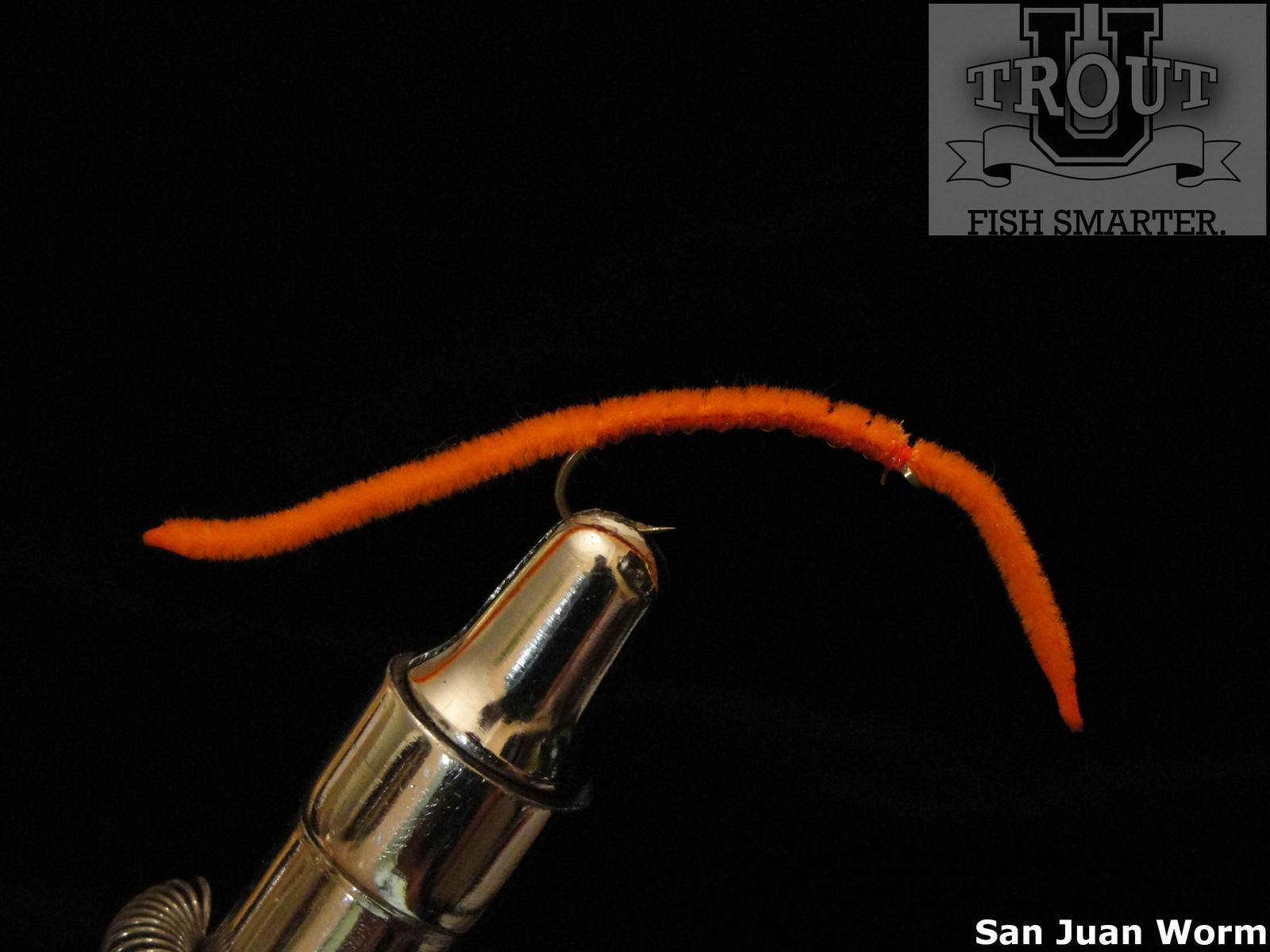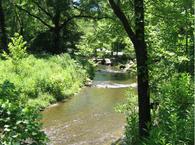
With an estimated 80,000+ trout in the first 4 miles or so below the dam, the San Juan River offers one of the best tailwater fisheries in America. There are appreciable numbers of trout in the river for approximately 20 miles, though most of the fishing action occurs in the uppermost 10 miles. Trout in the San Juan River average around 17 inches. Wading and floating are both effective methods for fly fishing for trout on the San Juan River, and fishing is good throughout the year.
Though the river flows through the high altitude desert area in the north portion of New Mexico, which is not a heavily populated area, anglers from across the nation come here to test their skills. Consequently, there are a surprising number of fly fishermen on the river at certain times. Also, the typically cool summers and winters that often provide a fair number of warms days make the river enjoyable to fish. The good news is, you can still find a spot on the river for yourself, even when the fishing pressure is high.
The river, which sports temperatures in the mid 40's throughout the year, features many flats, deep pools, riffles, and runs. Also, the river supports a large amount of algae, providing a great boost to the organisms that make up the trout's diet. The downside of the algae however, is that is makes the bottom of the river slippery. The water releases from the dam tend to be quite stable.
The name of the game on the San Juan River is to fish midge imitations. The San Juan River is filled with midge pupae and larvae, which account for up to 95% of the trout's appetite. Midge imitations will put you on the trout year round (especially streamers), though you can catch trout on other patterns as well on occasion. Fy fishing from shore, wading, and fishing from a drift boat are all possible on the river. Given the large numbers of trout living in the San Juan, you can catch fish using any of these attacks. However, using a drift boat will allow you to see more of the river.


If you've never fly fished with midges, the San Juan River is a great place to learn. The trout are plentiful and the bottom of the river is sand and gravel (and an occasional rock), with few places to hang your fly or for a trout to break the tiny tippet required when fishing midges. Which brings up a good point: given the tiny size of the midges, the first thing you will have to do is use a small enough tippet to go through the eye of a hook in sizes 18 – 22. Though the trout aren't necessarily that wary of your tippet, you will still need a 6X – 7X tippet for the sake of threading it through the hook's eye and allowing the fly to act naturally. Also, fly fishing with a tandem midge rig works well.
For fishermen who are wading, concentrate on areas where the current flows into a flat section of water or a pool. The best portion of these areas to fish them is between the middle and end of the current, making sure your midge (or the lower midge if using a tandem rig) is on the bottom of the river. Avoid the fastest water. You will probably want some split shot a few inches above the fly (or upper fly), the amount of which is determined by the current and depth being fished. You may also want to add a strike indicator, making sure it is positioned properly such that the rig drifts properly on the bottom without hanging up. Finally, make sure you set your drag right before tangling with any of the San Juan's trout.
Use up an across casts, being sure to mend the line, with the goal to position the strike indicator well upstream of the fly. Additionally, you will want to get the fly line far enough upstream of the strike indicator. Once the fly passes you, continue to allow it to float downstream, if possible, by stripping line.
Often, when the San Juan trout take the fly, the strike indicator may pause, rather than going under water. Once you see it pause, set the hook using a long, slow sweeping motion of the rod tip. Since the small fly's hooks set so easily, you are just trying to tighten the line up. Applying too much of snapping action will break the tippet.
The San Juan trout, which average 14-16 inches in length and can grow much larger, may make several runs once hooked, so don't reel until the runs have ened, being sure to keep your rod tip up. The trout may take several minutes to tire enough to get the close to you. However, be prepared for another run once they get a glimpse of you. You will probably need a landing net to prevent losing them at the last minute.
Seasons:
The San Juan provides good fishing throughout the year.
Winter
Some of the best action of the year occurs in the winter on the San Juan..
Spring:
During the spring runoff in the months of May and June, you will experience higher water than the rest of the year, but the trout are still cooperative and the river can still be waded in certain areas.
Summer:
Summer provides some excellent dry fly fishing at times.
Fall:
Fall fly fishing on the San Juan River is good as well.
San Juan River New Mexico Hatch Chart
In addition to midges, the San Juan River is also home to aquatic worms. The San Juan Worm fly was developed as an imitation of the worms in this river. Black flies also exist in large numbers on the San Juan. Blue winged olives are the most common mayflies, and in some portions of the river during June and July, pale morning duns hatch.
Several species of caddisfies live in the San Juan River, but the spotted sedges (whigh hatch in June and July) are the only one that has significant numbers. There is a significant population of scuds in the river, and you can successfully fish scud patterns in all seasons. Likewise, leeches are in the river in good numbers.
Terrestrials, including beetles, ants, and grasshoppers, can be used effectively in the mid to late summer. Streamers can also work well on the San Juan.





